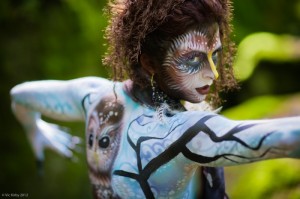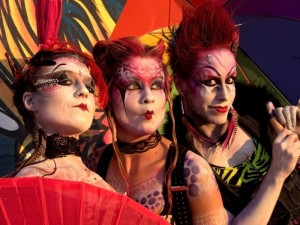Halloween originated as a holiday called All Hallow’s Eve, which celebrated the evening before All Hallow’s, which was a Christian holiday. All Hallow’s Eve embraced Pagan traditions and honouring the dead, and over time it has gotten a reputation for embracing the ghouls, ghosts, and other dark spooks of the world.
With scary movies and spooky costumes and a general atmosphere of horror, Halloween ups the ante for fear. But why do we like to scare ourselves and each other?

Come into the darkest depths of your mind… if you dare
Camosun College psychology professor Michael Pollock has some of the answers to the age-old question of why we like to be scared.
“It’s the same kind of thing as our ancestors sitting around a cave fire and hearing stories that prepare us in case we stumble upon similar encounters,” says Pollock. “We’re fascinated, even though it scares us to imagine ourselves in those situations.”
Pollock says whether we’re afraid or not, there are theories out there and studies done to show that there’s a physiological arousal to identify what emotion it is.
“Being scared in certain situations and consciously recognizing the fear is different than unidentifiable unconscious emotional reactions like scary movies and elements of Halloween, which produce arousing experiences like fight-or-flight reactions,” he says.
It’s been documented that if we associate things that scare us with something pleasurable, then we can consciously interpret them as things that are enjoyable.
“When people enjoy being scared, they are usually thrill-seekers,” he says. “This makes me wonder whether they are not able to get enough stimulation in their day-to-day lives and go about getting it by stimulating fear within themselves.”
Pollock has delved into the thrill-seeking trait by conducting sleep experiments with student volunteers to see how scary movies have an influence on their sleep.

“I’ve done this experiment multiple times and, sure enough, it disrupts people’s sleep and causes nightmares,” he says. “After we’ve analyzed their dreams I’ll show them the data and statistics and ask them whether they will still watch scary movies. Almost every time, nine out of 10 students will still want to, even though it can scare them and disrupt their moods in the long run.”
The psychology of wearing Halloween costumes and role-playing takes a person and puts them into situations where they are frightening to others.
“The dark side of Halloween costumes and depersonalizing ourselves is interesting,” says Pollock. “Some think that if they’re unrecognizable they can start riots and commit crimes. Personally, I think Halloween costumes are liberating and a way to not portray our normal personas.”
Paint it black… and every other colour
Local painter Kristin Grant is surrounded by the liberation that costumes bring: she creates body art and costumes. Grant has been body painting for only a couple of years but has been contracted out to do work for lots of Victoria thrill-seekers.
Grant wants people to feel beautiful in her paint, and she feels she achieves that even when creating something scary.
“Peoples’ costuming experience is different depending on the characters they portray,” she says. “Different characters bring out different aspects of the personality and it’s really fun to watch the evolution of different characters after they’ve been created.”
Grant recently had a client who was having her first-ever photo shoot and had been painted for the first time. Grant transformed her into a “dark, mysterious alien goddess” and saw quite the evolution in her client.
“She was amazed when it was finished,” says Grant. “She said she hadn’t realized she could look so beautiful; it was amazing. I was the assistant for her photo shoot and saw her in these beautiful, goddess-like poses being so empowered and powerful in front of the camera.”
Grant doesn’t just paint other people; she turns the spray can on herself. One of her favourite characters to portray is a clown zombie.
“I love being a clown zombie because it’s the craziest character I can think of. I can be curious, funny, scary, and purposely creep people out as a clown zombie,” says Grant. “It’s so easy for me to release any spontaneous inspirations I have as a clown zombie. There’s no boundaries to embodying my character, especially when I’m covered in paint.”

From clown zombies to the cheap thrills of horror movies, Halloween is all about escaping reality and embracing the joys of fear, for whatever reason. But just remember, sometimes a costume is more than a disguise. Sometimes, according to Grant, it’s not about hiding at all: it’s an amplification of a certain part of that person.
“Some people want to be scary for Halloween because they don’t express their dark sides often, while others want to be something pretty or funny,” says Grant. “People want to experience their Halloween portraying different aspects, so they choose their characters based on what part of themselves they want to unleash.”
